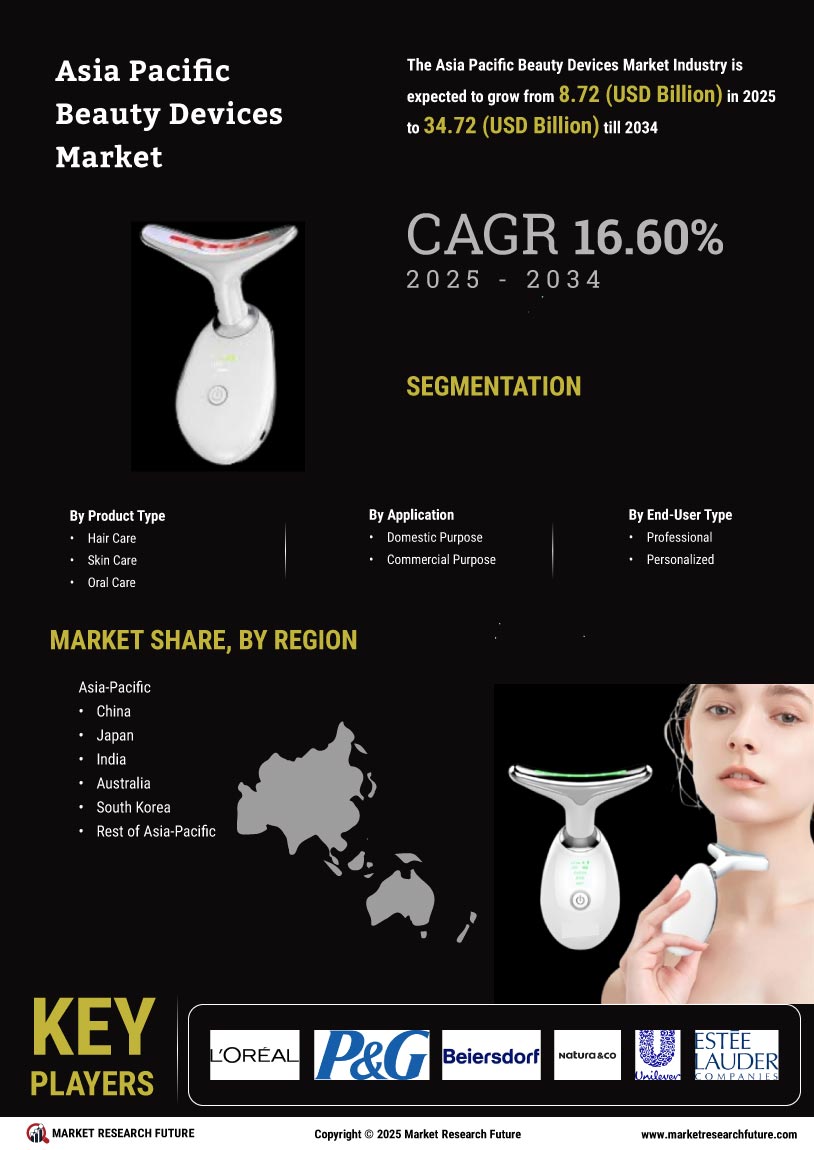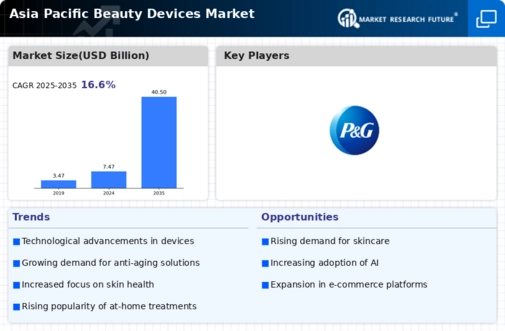Leading market players are investing heavily in research and development to expand their product lines, which will help the beauty devices market grow even more. Market participants are also undertaking various strategic activities to expand their footprint, with important market developments including new product launches, contractual agreements, mergers and acquisitions, higher investments, and collaboration with other organizations. The beauty devices industry must offer cost-effective items to expand and survive in a more competitive and rising market climate.
Manufacturing locally to minimize operational costs is one of the key business tactics manufacturers use in the Asia Pacific beauty devices industry to benefit clients and increase the market sector. Major players in the beauty devices market, including L'Oréal Group, Nu Skin Enterprises Inc, Panasonic Corporation, Syneron Medical Ltd, Home Skinovations Ltd, TRIA Beauty Inc, Procter & Gamble, and others, are attempting to increase market demand by investing in research and development operations.
Koninklijke Philips NV is a diversified technology firm that designs and manufactures medical systems and customer electronics products. The company offers products and solutions in diagnostic imaging, enterprise diagnostic informatics, image-guided therapy, ultrasound, monitoring and analytics, sleep and respiratory care, population health management, connected care informatics and therapeutic care. It offers mother and childcare, personal care and oral healthcare products, including power toothbrushes, brush heads, baby bottles, sterilizers, breast pumps, shavers, groomers, trimmers, skin care, hair care and hair removal products.
A new range of DIY female grooming products based on cutting-edge technology was revealed by Koninklijke Philips N.V. in 2020. These products can be used to enhance hair and face attractiveness. The sophisticated microprocessor technology in the devices enables real-time adaptation to provide personalized care.
Hindustan Unilever Ltd, a subsidiary of Unilever Plc, is a manufacturer and seller of fast-moving customer goods. The company offers packaged foods and refreshments, beauty and personal care products, and homecare products. HUL markets its products under the Bru, Magnum, Fair and Lovely, Ponds, Surf Excel, Knorr, Taza, Lakme, Dove, Pepsodent, Lipton and Kissan brands. The company also offers ice creams, staples, health food drinks, culinary products, and frozen desserts.
In June 2021, Hindustan Unilever Ltd declared its plans to rise up the online reach of the firm's premium brands via standalone branded sites and its multi-brand shopping forum UShop, wherein UShop is expanded beyond the National Capital Region and Mumbai to eight more cities across the country.












Leave a Comment